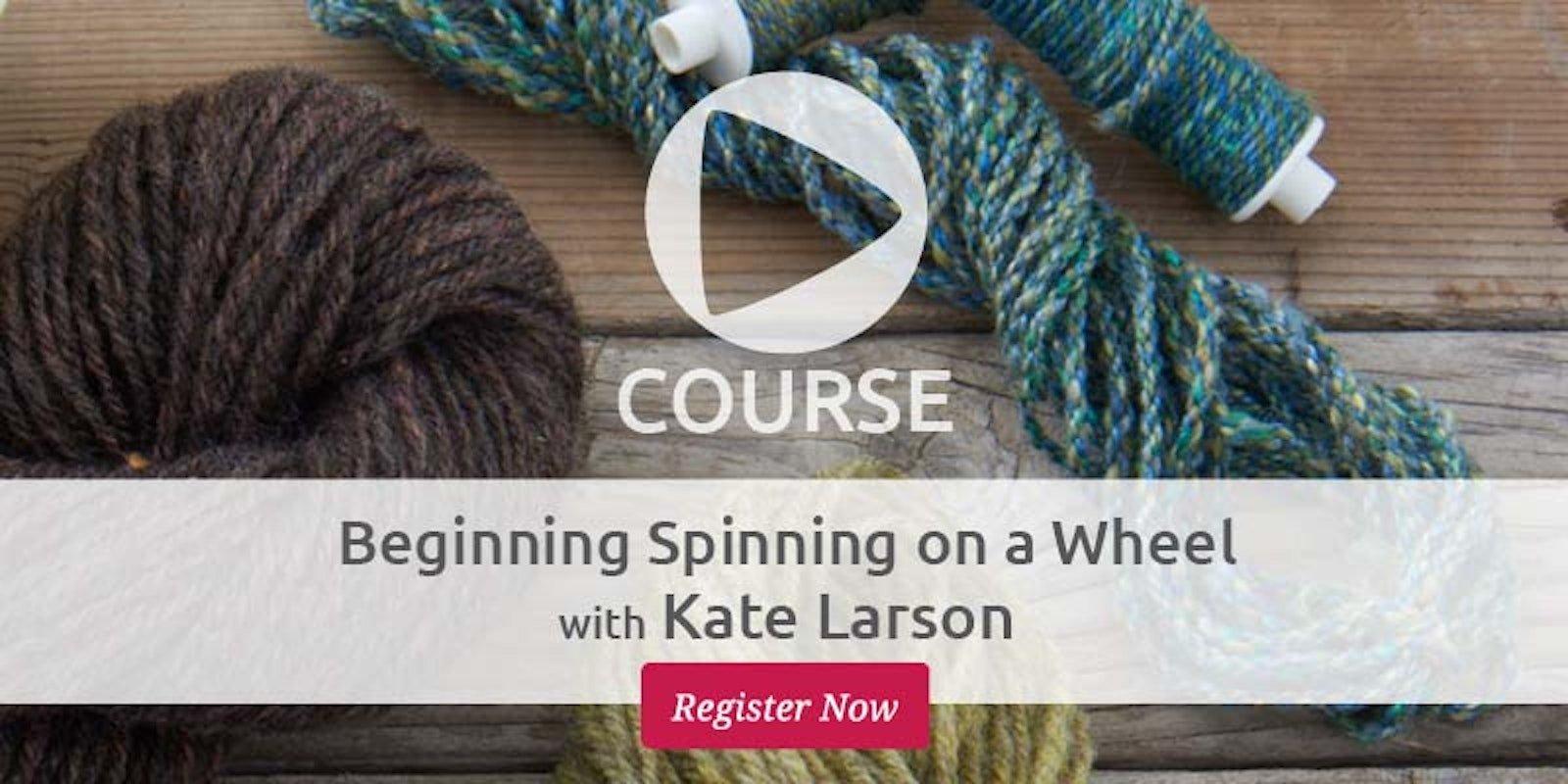While I’ve been knitting for a very long time (I have yarn older than some of my coworkers), spinning yarn is something I’ve orbited without ever really touching down. Recently, a very kind and patient colleague invited me and another friend into her living room one Saturday, to show us how to spin. Two things struck me that morning: 1) I work in a place where it’s normal to own three spinning wheels, and 2) spinning is not hard.
I hear the word “hard” a lot. Beginner—and not so beginner—knitters often ask if something is hard, or they look at a finished project and say, “That looks hard.” Climbing on my soapbox, I want to say that very few things are hard. “Hard” implies extreme difficulty, pain, struggle, and occasional defeat. A codependent relationship is hard. Fighting an illness is hard. Watching loved ones suffer is hard. Spinning (like fixing a car or learning to cook, or knitting for that matter) is not hard. Each requires time, focus, and attention to detail. Each can seem tricky and challenging at first, but patience and persistence will overcome any setbacks. Cognitively speaking, each is a walk in the park: if you can learn to speak and drive a car, you’ve got the brainpower and basic hand-eye coordination to spin. Or in my case achieve a wonky and slubby but nonetheless thrilling bobbin of handspun yarn.
My first yarn. Gnarly and awesome.
Spinning with Kate
Getting back to the spinning lesson itself, my friend just set me in front of a wheel, explained its basic parts, and had me practice treadling for a while. Treadling is one of those tricky bits: you need to make the wheel go in one direction only, which definitely takes practice. Often I had to use my hand to get the wheel going in the right direction with enough spin. My friend then handed me a pile of fluff and explained “pre-drafting,” which is like aggressive petting with a goal: you pull the wool fibers apart a bit to make them easier to spin. If you are a fidgeter like me, pre-drafting is an innate skill: just gently tug and pull and smooth the fibers until they open up a bit. Then spinning! Which was sort of not hard at all. As the wheel turns, draft some fiber (that is, feed a small amount toward the wheel’s orifice) with one hand and hold the fiber with the other. The turning wheel adds twist to the drafted fiber, transforming it into yarn. That’s it. Obviously that’s NOT it—there are all sorts of nuances and refinements and skills to be learned. You can prep your fiber in various ways to get a specific type of yarn. How you let the twist into your fiber is called the "draw", and there are different types of draws with different purposes. You want to control your yarn’s twist for all sorts of reasons, and that can go off the rails really easily. But those are all details to be picked up in time. When we learn to knit, we start with knit and purl, and a world opens up. We are happy because we are knitting—all that stuff like increases and decreases and cast-ons can come later. It’s the same here: I was spinning, and I was happy.
Kate Larson and friend
Not everyone is as lucky as I am, what with spinning friends and multiple wheels and lots and lots of fluff available. If you want to learn spinning but don’t work in an office that resembles a fiber fest, Kate Larson’s Beginning Spinning on a Wheel course is a great place to start. Like my friend, Kate just sits you down and gets you started in the friendliest way imaginable. She goes over all the complicated spinny things that make up a wheel, shows you several wheels that are good for beginners, talks about some of the most common spinning fibers and how they differ, and then gets you spinning. She also shows what to do AFTER you’ve spun, with a section on plying. And amazingly, she does all of this in about an hour (which leaves you more time to practice spinning!)—probably because Kate understands that practice and patience lie at the heart of spinning, and everything else is just details.
Beginning Spinning on a Wheel is now available as an on-demand course you can watch at your own pace, anywhere, any time, on any device.
Happy watching! Allison



